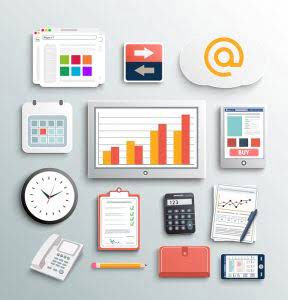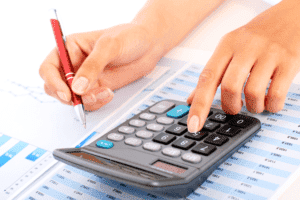Plant Assets What Are They, Examples, Accounting

Buildings can also contain equipment Bookstime storage, warehouses for merchandising and sales, or on-site centers that assist employees and staff, especially for bigger companies. Buildings are assets that often retain higher quantities of value, such as office space or a physical location where consumers can do business. This might be a single storefront site for smaller companies or numerous locations or buildings for bigger enterprises. If debt has been used to purchase the plant asset, then the cash flow statement would also show the regular payments towards that debt too.
Types of Plant Assets
Founded in 1993, The Motley Fool is a financial services company dedicated to making the world smarter, happier, and richer. The company has continued to burn through its cash plant assets this year, losing $124 million through the first nine months, with only about $30 million left as of Sept. 30, according to financial filings. Last year, the company generated $295,000 in revenue and reported a net loss of $184 million, according to financial filings. This is crucial to consider when buying land for a business since it might mean the difference between a long-term profit or loss. Each asset serves a certain purpose in how it helps a business, and it is more advantageous to focus on their functions rather than their relative worth as long as they serve entities well. They provide several contributions to a company and understanding how they work can aid in tracking the organization’s growth.

Buildings
As such, these assets provide an economic benefit for a significant period of time. From an accounting perspective, plant assets are typically held on the balance sheet at historical cost (what the company paid for them) less depreciation (ongoing wear-and-tear expense) over time. This can help provide accurate financial information if the market for plant assets is unusually volatile. Accurate reporting of plant assets in financial statements is crucial for assessing a company’s financial health, evaluating its asset utilization, and determining its ability to generate future cash flows. It provides transparency and accountability to stakeholders and assists in making informed decisions regarding investments, lending, and overall business operations.

Acquisition Costs
Thus, for accounting and plant asset disposal, they are recorded at cost, and are depreciated over the estimated useful life, or the actual useful life, whichever is lower. Finally, if required, the business or the asset owner has to book the impairment loss. In that case, the estimated realized value of the asset is less than the actual depreciated cost appearing in the books. They are usually land and building, plant and machinery that may be fixed or movable, or any other equipment that can be categorized as the same.
What are Plant Assets?
Later on, the company will charge the depreciation according to the method of depreciation it usually follows. 18,000 USD must be charged to the plant asset account for every financial year as a depreciation expense. Any land maintenance, improvement, renovations, or construction to increase building operations or revenue generation capacity are also recorded as part of the plant assets. The assets can be further categorized as tangible, intangible, current, and non-current assets. It includes cash/bank, short-term securities, gross vs net inventories, account receivables, etc.
- The bankruptcy alternative bypasses the courts to transfer an insolvent company’s assets free of unsecured debt.
- A plant asset should be recognized at its costs when it fully meets the definition above by IAS 16.
- To be classified under the category of this kind of asset, it should be of tangible nature, which means that it should have the feature of being seen or touched.
- If an impairment is identified, the asset’s book value must be adjusted to reflect this loss.
- Although generally lower in cost than machinery or buildings, these assets contribute to a productive and organized working environment.
- The costs of these activities are also recorded in the company’s financial statements, further affecting the company’s profitability and the recorded value of the assets.
Companies may periodically invest in repairs or renovations to keep buildings safe, efficient, and compliant with regulations. Buildings are vital for housing employees, storing inventory, or hosting customers, and they may be repurposed or expanded as a business grows. Depreciation on buildings is calculated based on their expected useful life, which can vary depending on construction quality and maintenance. Current assets typically include cash, inventory, accounts receivable, and other short-term liquid assets. In contrast, plant assets represent long-term property expected to be around for at least a year, often quite a bit longer than that. Plant assets are key to a company’s production process and are often considered among the most valuable items on the balance sheet.

Plant assets and the related accumulated depreciation are reported on a company’s balance sheet in the noncurrent asset section entitled property, plant and equipment. Accounting rules also require that the plant assets be reviewed for possible impairment losses. Plant assets usually require a significant financial investment due to their essential role and durability in operations. This high monetary value is reflected in the initial cost of acquiring and setting up these assets. For instance, purchasing heavy machinery or a building often demands a substantial upfront cost that impacts a company’s cash flow and financial planning.
What is property, plant & equipment?
It involves various aspects, such as the acquisition, recording, depreciation, and disposal of these assets. Depreciation is the process by which a plant asset experiences wear and tear over a particular period of time. Depreciation expense — calculated in several different ways — is then carried through to the income statement and reduces net income. Over time, plant asset values are also reduced by depreciation on the balance sheet. Like any category of assets, it’s critical to evaluate plant assets on a company-by-company basis. The disposal of plant assets requires consideration of market value, decision-making, and appropriate accounting treatment.
Improvements
The later years are charged a lower sum of depreciation based on the assumption that lower revenue is generated. Most companies, especially those that run fully in-house and do not rely on other parties for production or processing, require land. Even if a company does not operate on-site or own property, many businesses profit from purchasing land, even if they do not intend to use it until later. In this case, impairment will be computed based on the lower of the recoverable amount and the carrying amount of the plant assets.
